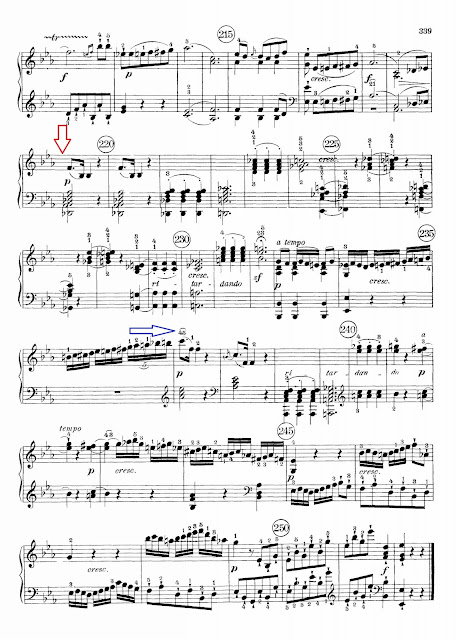CDLXXXII. BEETHOVEN, Ludwig van (1770-1827)
Sonata #18 in E-Flat Major for Piano, Op. 31, No. 3 (1802)
1. Allegro
2. Scherzo. Allegretto vivace
3. Menuetto. Moderato e grazioso
4. Presto con fuoco
Igor Levit, piano
(21:36)
Most of Beethoven's serious early works hide profound ideas behind the Haydn-like facade of their playfulness. This might be the classic example.
First movement
In approaching the tonic (Bar 7, by this numbering), Beethoven uses some very interesting chords. The first three bars are a third-inversion dominant on the eleventh.
This just means that it is a B-Flat chord in the third inversion (A-Flat in the bass) based on the 11th degree of the tonic, which is A-Flat. Building up thirds from there, we get the C and E-Flat. The F is just the fifth of the B-Flat chord which is inverted to the third position.
The next chord is A-diminished (vii°/V), which leads to a second-inversion tonic, followed by the dominant-tonic cadence.
The theme is playfully developed.
Second subject:
The development section begins with the opening theme, but with
a much lower and deeper timbre.
This motif will go through numerous transformations:
Recap:
Coda ... theme in the subdominant (A-Flat) and then back to the tonic:
Second movement
Normally in 3/4, this Scherzo is in 2/4, in the subdominant (A-Flat)! The little clarion calls are awfully cute -- but Beethoven really wakes everyone up with this sudden fortissimo!
[second ending]: by simply raising the E-Flat a semitone to E-Natural he implies a C dominant resolving to F Major (if only for a few bars)!
Strange little riffs alternating between p and f ...
Third movement
A perfectly delightful minuet:
with a perfectly bizarre (but beautiful) trio:
Fourth movement
A couple of
full-stops before the finish:

















No comments:
Post a Comment